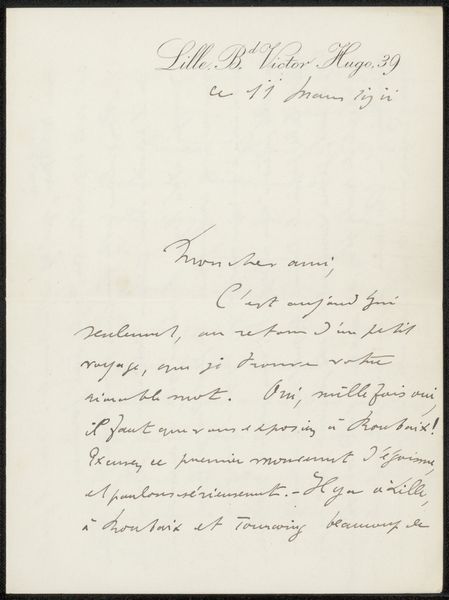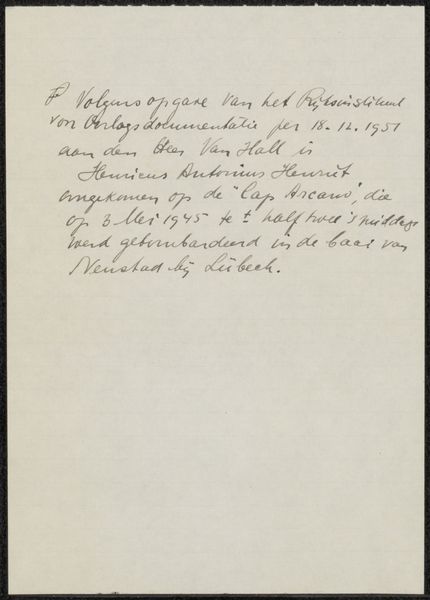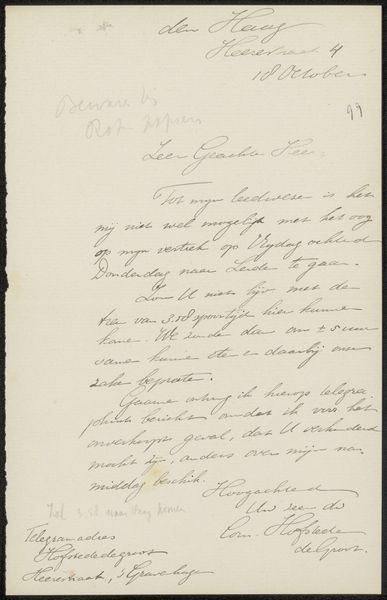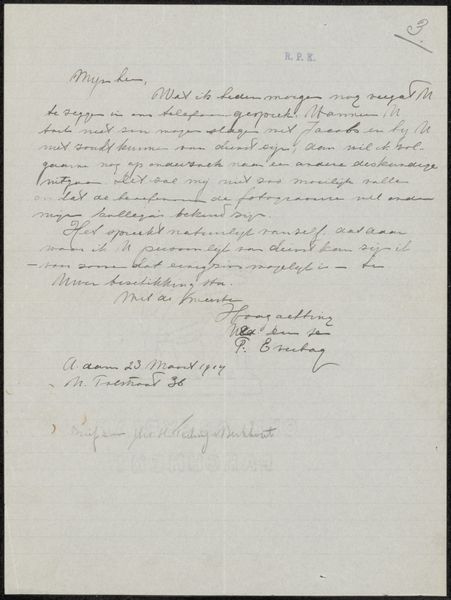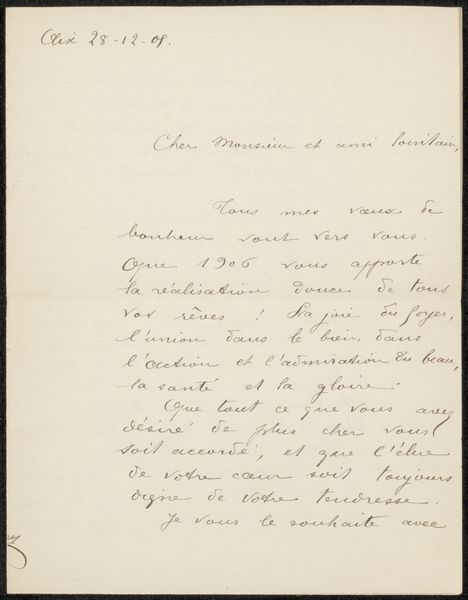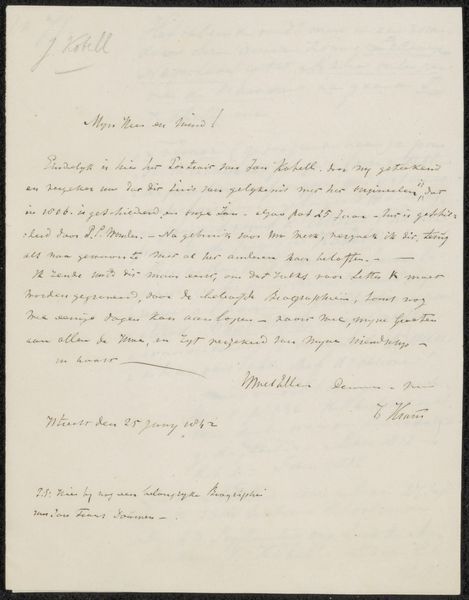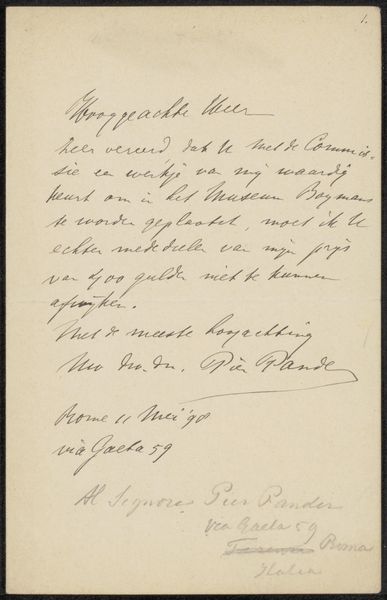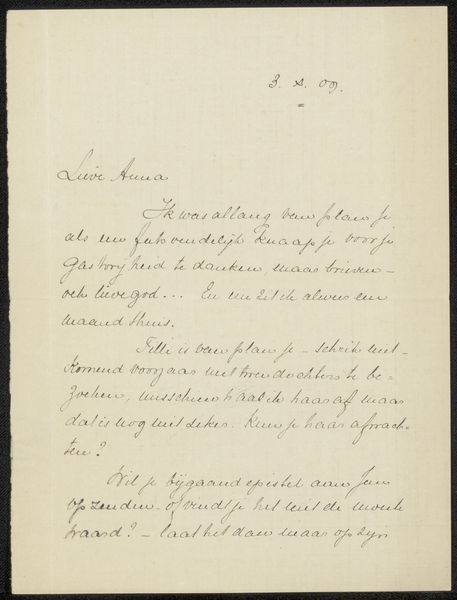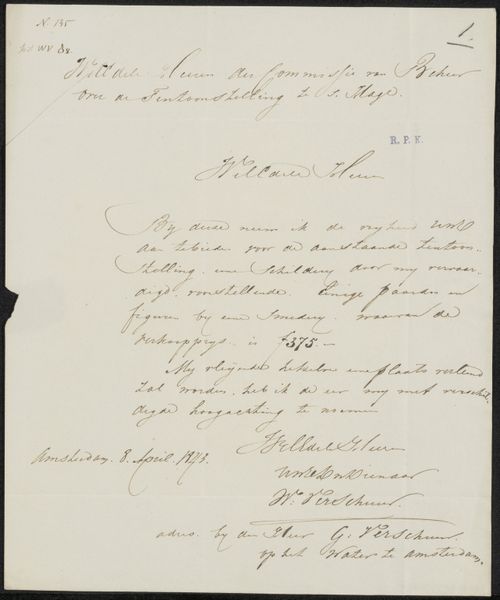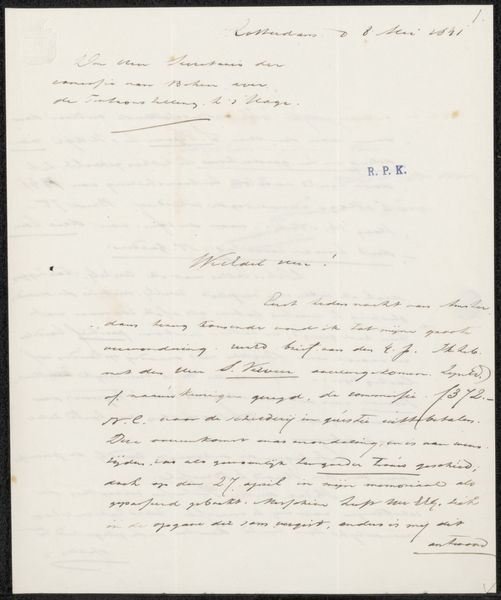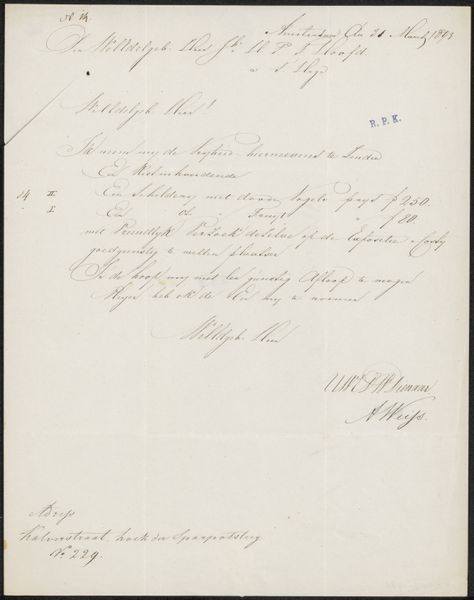
drawing, paper, ink, pen
#
drawing
#
ink paper printed
#
pen sketch
#
paper
#
ink
#
romanticism
#
pen-ink sketch
#
pen work
#
pen
Copyright: Rijks Museum: Open Domain
Curator: We are now viewing a work titled "Brief aan anoniem," which translates to "Letter to Anonymous," believed to have been created around 1844 by Jacob Joseph Eeckhout. It's a pen and ink drawing on paper housed here at the Rijksmuseum. Editor: My immediate reaction is that it appears quite fragile. The paper seems aged and the ink has faded in places, giving it an air of quiet mystery, as if it holds secrets carefully guarded by time itself. The handwriting is so delicate and ornamental! Curator: Indeed. Consider how the act of writing itself—the labor and care devoted to forming each letter with a quill— speaks volumes about the writer’s intentions, reflecting formal conventions while perhaps subtly challenging or reinforcing the era’s power dynamics. The artist's very selection of tools has an implicit history within it. Editor: Absolutely! Letters themselves are loaded with semiotic meaning, from the kind of stationery chosen to the formulation of address and signature. I find myself lingering over the loops and swirls of Eeckhout's script. What kind of societal structure insisted on these formal modes of address? What beliefs are being symbolically preserved, enacted or contested? Curator: The lack of a known recipient shifts our focus from specific interpersonal communication to broader issues concerning anonymity, class, and perhaps even surveillance. The handwriting looks almost like an attempt at some kind of ornamental skill but seems, on closer look, rather hurried. Perhaps this speaks of the social strata from which Eeckhout operates? A middle class anxious about making appeals? Editor: I find it telling that the letter is to someone anonymous. That resonates. Maybe this resonates because everyone knows the hidden social meanings contained within certain objects. The symbol of a "letter," though so ordinary, can be an act of rebellion! We can all be anonymous recipients of the dreams and grievances held within. Curator: Well put. Viewing a piece like this reminds us that material objects carry multiple, sometimes conflicting, narratives within their forms. They can operate as acts of compliance, or small subversions. The very preservation of such a document is its own commentary, wouldn't you agree? Editor: Indeed. It causes me to wonder who was so insistent on its preservation in the first place, and why. These are the layers that build up a kind of collective unconscious through visual objects.
Comments
No comments
Be the first to comment and join the conversation on the ultimate creative platform.
